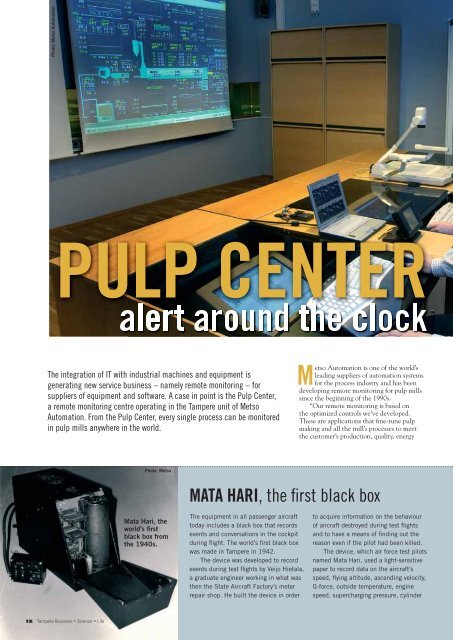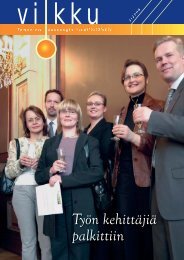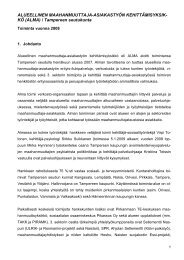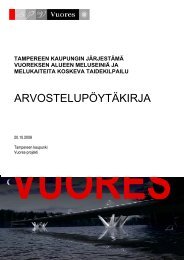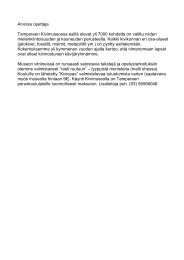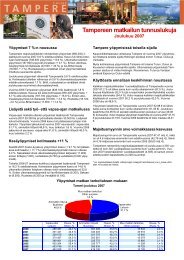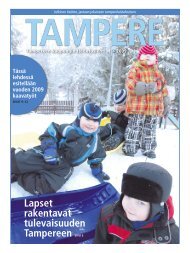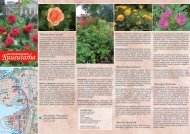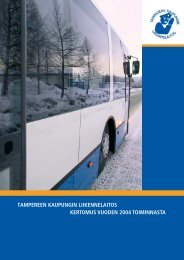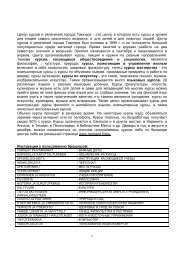- Tampere seizes creative economy
- Tampere seizes creative economy
- Tampere seizes creative economy
You also want an ePaper? Increase the reach of your titles
YUMPU automatically turns print PDFs into web optimized ePapers that Google loves.
Photo: Metso Automation<br />
PULP CENTER<br />
The integration of IT with industrial machines and equipment is<br />
generating new service business – namely remote monitoring – for<br />
suppliers of equipment and software. A case in point is the Pulp Center,<br />
a remote monitoring centre operating in the <strong>Tampere</strong> unit of Metso<br />
Automation. From the Pulp Center, every single process can be monitored<br />
in pulp mills anywhere in the world.<br />
Metso Automation is one of the world’s<br />
leading suppliers of automation systems<br />
for the process industry and has been<br />
developing remote monitoring for pulp mills<br />
since the beginning of the 1990s.<br />
“Our remote monitoring is based on<br />
the optimized controls we’ve developed.<br />
These are applications that fi ne-tune pulp<br />
making and all the mill’s processes to meet<br />
the customer’s production, quality, energy<br />
Photo: Metso<br />
MATA HARI, the fi rst black box<br />
Mata Hari, the<br />
world’s first<br />
black box from<br />
the 1940s.<br />
The equipment in all passenger aircraft<br />
today includes a black box that records<br />
events and conversations in the cockpit<br />
during flight. The world’s first black box<br />
was made in <strong>Tampere</strong> in 1942.<br />
The device was developed to record<br />
events during test flights by Veijo Hietala,<br />
a graduate engineer working in what was<br />
then the State Aircraft Factory’s meter<br />
repair shop. He built the device in order<br />
to acquire information on the behaviour<br />
of aircraft destroyed during test flights<br />
and to have a means of finding out the<br />
reason even if the pilot had been killed.<br />
The device, which air force test pilots<br />
named Mata Hari, used a light-sensitive<br />
paper to record data on the aircraft’s<br />
speed, flying altitude, ascending velocity,<br />
G-force, outside temperature, engine<br />
speed, supercharging pressure, cylinder<br />
12 <strong>Tampere</strong> Business • Science • Life


